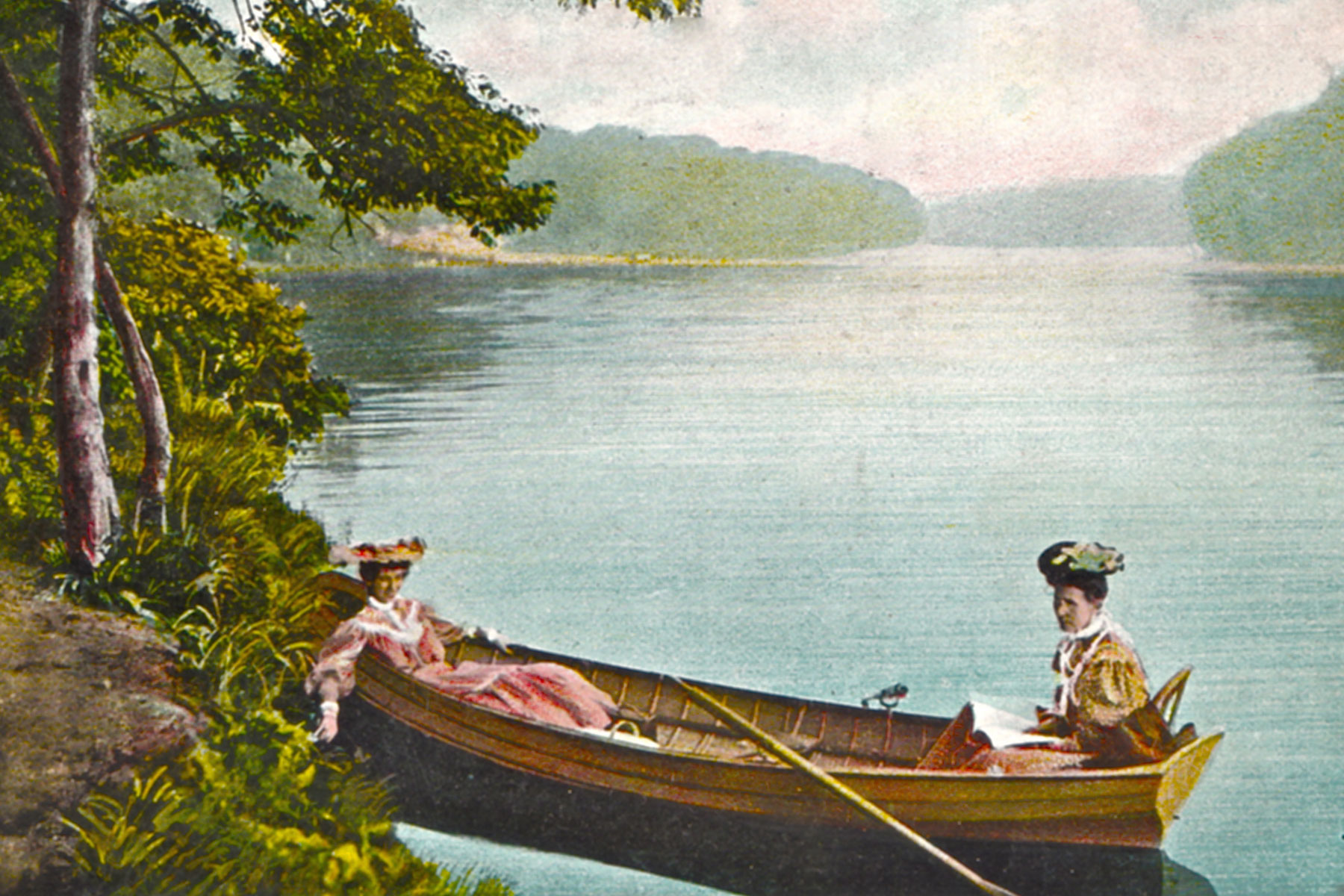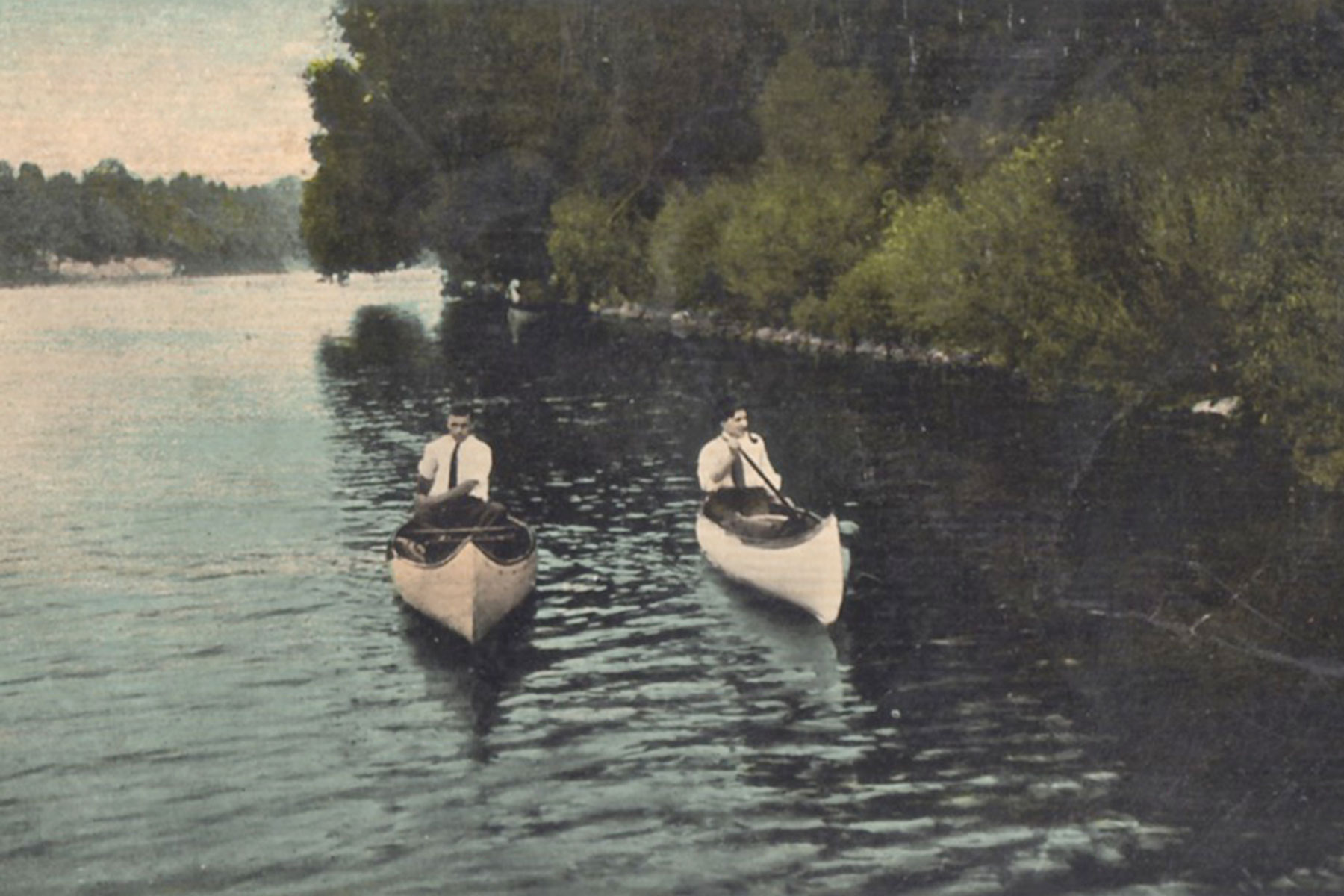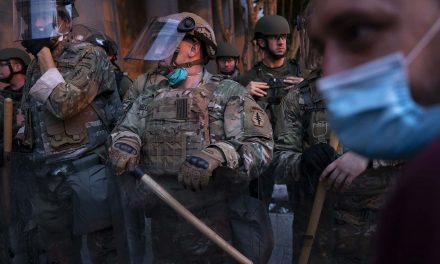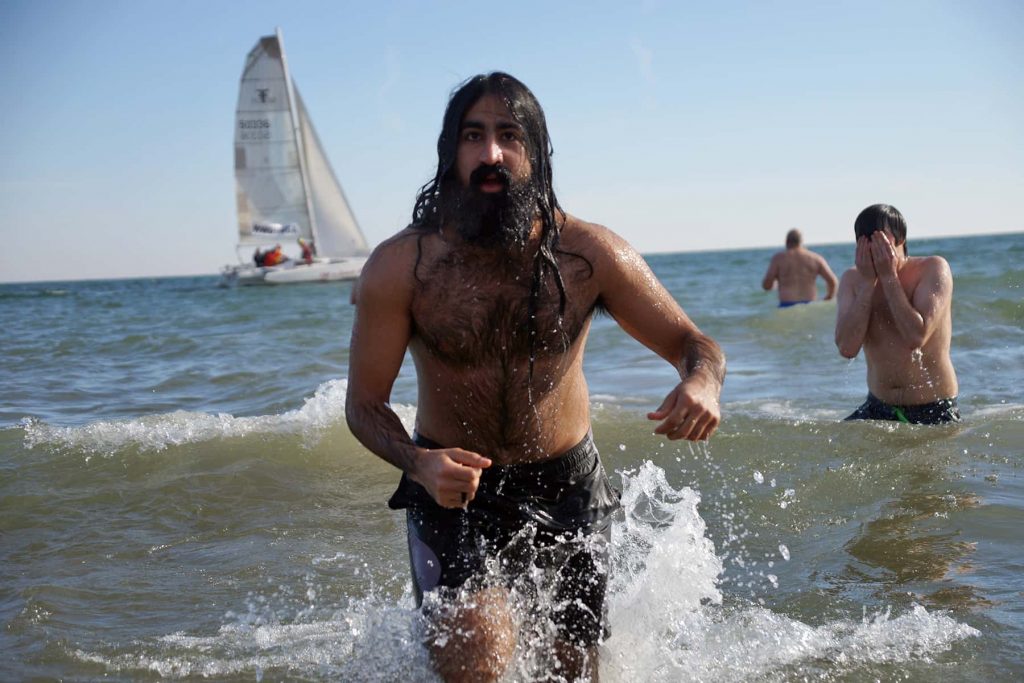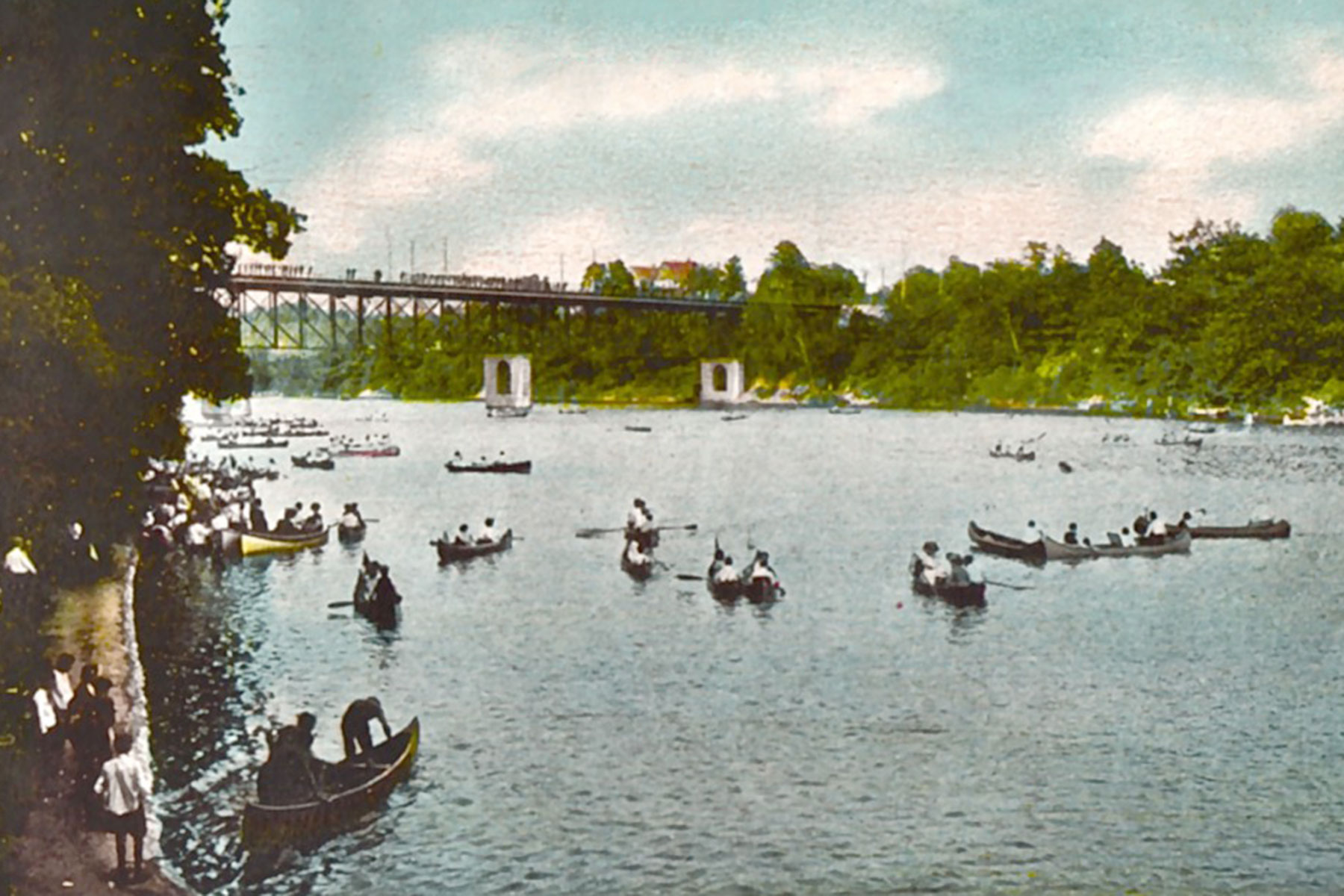
Canoes crowd the Milwaukee River at Gordon Park on a fine summer day in the early 1900s, as spectators line the railing of the Folsom bridge, now Locust.
The North Avenue dam, built in 1843, divided the Milwaukee River into an industrialized lower river through downtown to the harbor and a relatively untouched upper river, which became a center for recreation for the growing city. Here, from the late 1800s to World War I, you could take a steamboat from North Avenue up the river to visit a beer garden or an amusement park. For the more energetic, there were businesses at both ends of the North Avenue bridge renting canoes and row boats by the hour or by the day.
And there were boat clubs. A newspaper article from 1912 listed 20 boat clubs on the upper river with a membership of around 300. The clubs had names like White Squadron, Pleasant Valley, La Fa Lot, Sun Set, and Shady Nook. If the article had been written a few years earlier, it would have included the Daphne Boat Club.
Daphne member Lansing Robinson shared his memories of the club in the Sept. 6, 1935, edition of the Milwaukee Journal. His account is a window into an era when canoes were king on the upper river.
The Daphne Boat Club′s two-story clubhouse was on the eastern bank, just above the North Avenue Viaduct in an inlet called Bullhead Bay. Now filled in, the inlet was located at the foot of East Thomas Avenue.
The ground floor of the Daphne Club′s building provided storage for club boats – including an imposing 60-foot vessel able to accommodate 10 oarsmen and 14 guests. The club also owned a pair of four-oar working boats, and three racing shells (a four-oar, a double, and a single). The building′s upper lever included a social hall, lockers, and dressing rooms.
Originally called the Mitchell Boat Club, it was sold in 1887 to a group of young men. The new club needed a name, and, according to Lansing Robinson, a member named Al Thomas, suggested “Daphne.” In mythology, Al recalled, the name had something to do with water.
Well, sort of. In the oldest version of the myth, Daphne is a mortal girl determined to remain a virgin. A young man falls in love with her and dresses as a woman in order to join her hunting party. The ruse is discovered when they strip off their clothing to bathe in a river. The god Apollo then pursues Daphne and to escape his unwelcome attentions, she turns into a laurel tree.
“Al wasn’t exactly a shark on Greek mythology,” Robinson wrote.
During intense periods of training, Robinson wrote in his 1935 Journal article, members would sometimes overnight on cots and hammocks in the locker room. In the early morning, they would row two-mile sprints, followed by a swim in the river, a massage, and a hearty breakfast at a North Avenue restaurant before boarding a streetcar for the trip downtown and the start of the work day.
Scotty Dore was club president. A notorious practical joker, he once was rowing in a double with another member and deliberately capsized the craft. As he swam to shore he heard cries for help. He belatedly remembered the other man was unable to swim. He swiftly returned and towed the man to safety. On another occasion, Scotty, stepping from a boat at the club’s floating dock, noticed another member kneeling at the edge. As he passed, he playfully shoved the man into the river. He “went down like a rock,” Robinson wrote. Scotty recalled that this man, too, was not a swimmer. He dived in and pulled him out.
This led to a tongue-in-cheek suggestion the club award Scotty a medal for saving lives of two popular members.
Contests between canoe clubs were popular events. In 1938, for example, more than 15,000 attended the two-day Milwaukee Journal water sports show, held on the river between Kern and Hubbard parks. In addition to rowing races, that event included half- and one-mile marathon swimming contests and was capped by a motor boat race.
Popular as that event was, it was dwarfed by the annual Venetian night water carnival sponsored by the canoe club association. In its Aug. 6, 1913, edition, the Milwaukee Sentinel reported 50,000 spectators crowded both river banks between Blatz Beer Garden at the foot of East Concordia Avenue and Riverside Park to watch the festivities.
“As twilight came on lights began to twinkle along the shore and lighted Japanese lanterns appeared on the canoes,” the Sentinel reported. “Soon a long line of lights could be seen far down the river, slowly approaching the Folsom [later renamed Locust] Street bridge. As it came nearer the mass of illumination separated into individual lights and the parade was passing the pavilion of Riverside Park.”
The winner of Venetian night water carnival that year was the entry of the Pleasant Valley Canoe Club – a barge disguised as a small island complete with trees and shrubbery.
“In the center of the float was a small fire – a campfire it proved to be when the judges could see the eight figures squatted around. Lolling about, as if they were just ready to retire to their tents for the night, were a group of canoe campers, clad in any old thing for comfort’s sake, smoking pipes and looking as if they were fifty miles from anywhere with nothing but wilderness around.” – Milwaukee Sentinel
“The upper river was handy,” wrote Journal reporter Robert W. Wells in 1964. “It was Milwaukee’s principle playground, with dancing, band concerts, swimming, boating, fishing, and, on special occasions, a touch of Venice.”
The Daphne club was an all-male institution but women commonly rented boats for a strenuous day’s outing on the river and the all-female Milwaukee-Downer College offered competitive rowing as part of its athletic program starting in the 1890s. The college’s fiercely contested annual regatta was a major event on the river.
On their own, many Milwaukee women could expertly handle a small boat. But asked on a date these women generally let their beaus do the work while trying their utmost to look frail and helpless. In such ways, the social conventions of the time were observed.
The Daphne club closed in the 1890s when members were unable to keep up on maintenance, but other groups remained active for several more decades. One organization, the Milwaukee Rowing Club, founded in 1894, continues to this day.
Recalling his boat club of more than 40 years before, Lansing Robinson concluded with this memory of the days when pleasure boats crowded the river: “The black barge had room for 10 oarsmen … . The seats were staggered and allowed space for a passenger beside each oarsman. We gave frequent barge parties with a ride up to Luddemann’s on the River for a supper of boiled chicken or whitefish, green peas, French fried potatoes, beer. Then after a bit of dancing we rowed down the picturesque river in the moonlight or starlight, with a girl seated alongside each man, and everybody singing to the rhythmic sweep of the oars, “Seeing Nellie Home,” “Merrily We Roll Along,” “Good-night Ladies,” “Down Mobile Bay,” and other suitable glees of the late Victorian period. Some of the boys met their fate on those rides, and although the old voices may squeak a bit now and then, they are still singing to the same girl.”

